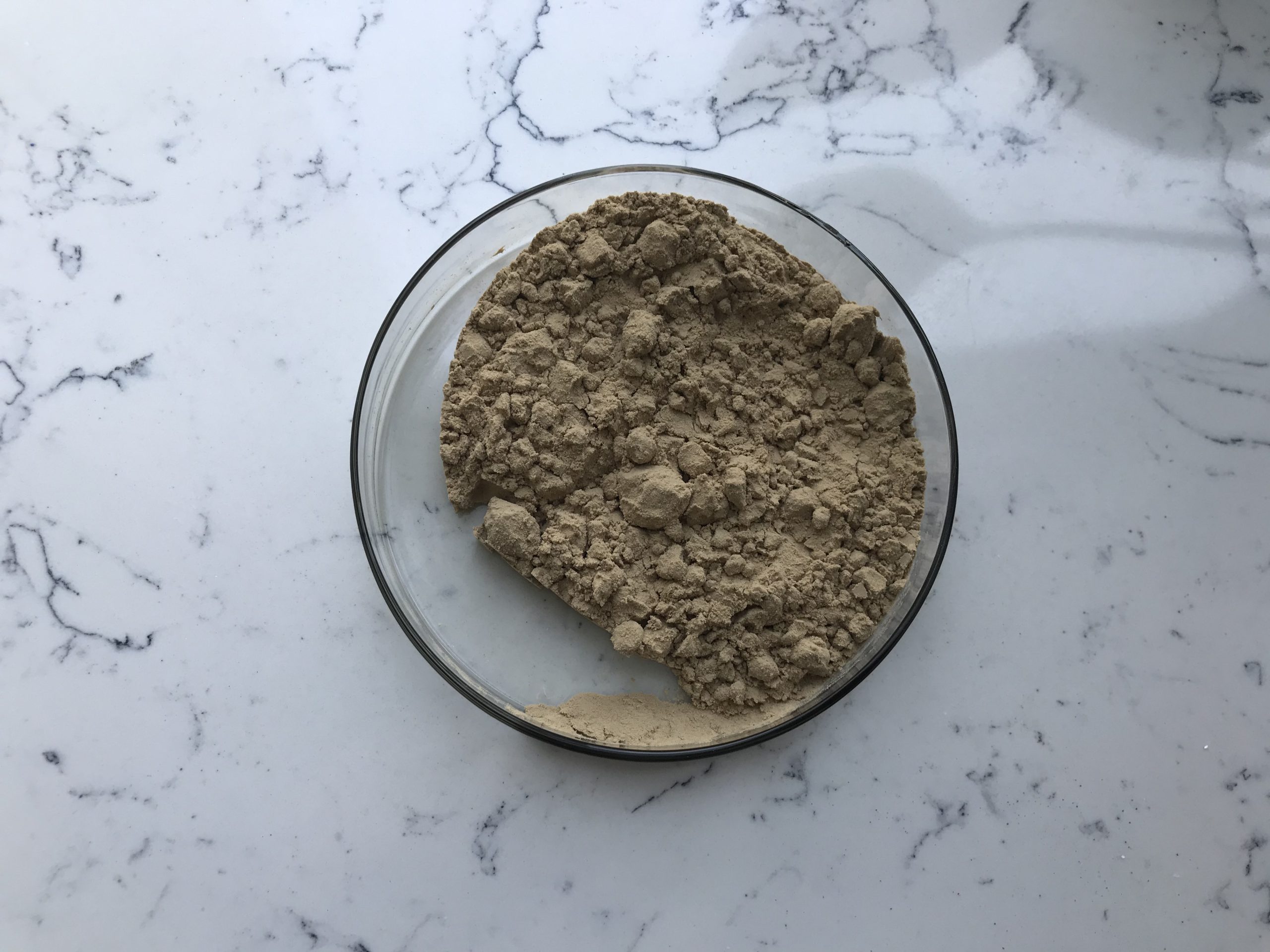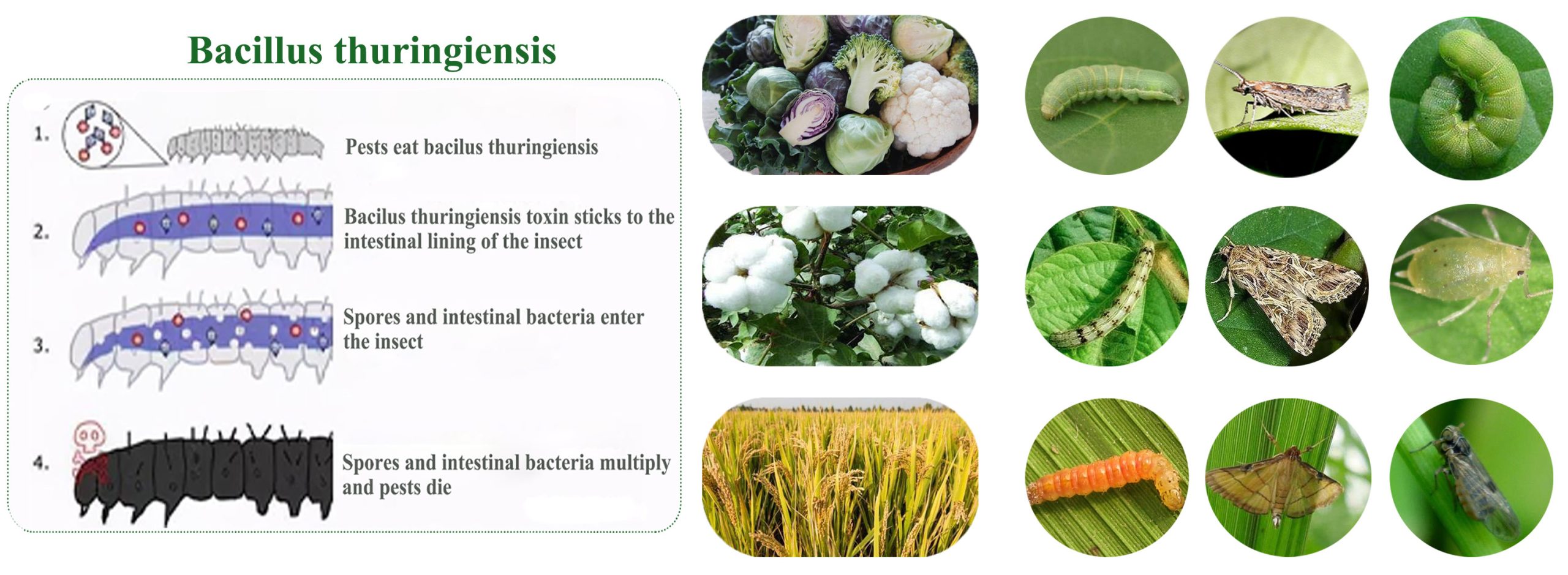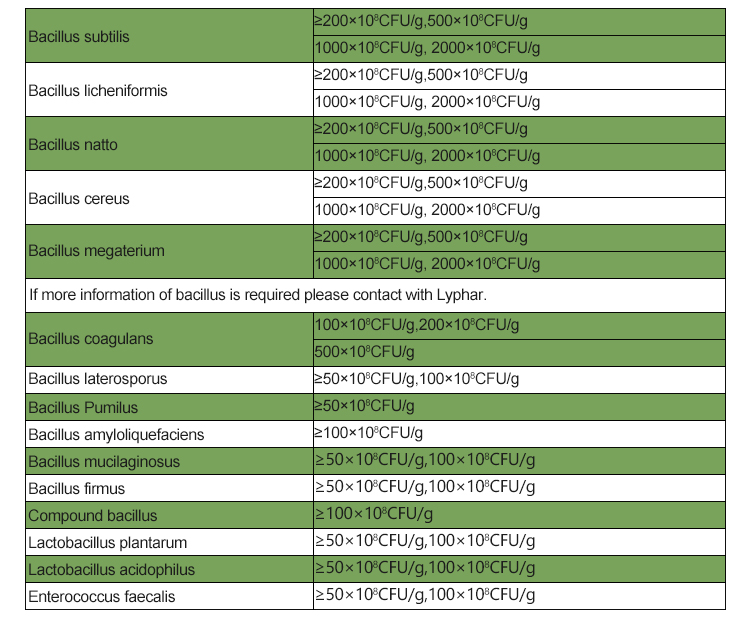Bacillus Thuringiensis (BT) is a gram-positive, soil-dwelling bacterium that is commonly used as a biological pesticide. It produces a group of crystal protein toxins known as Cry proteins or Bacillus Thuringiensis toxins. These toxins are toxic to a specific group of insects, primarily caterpillars, beetles, and flies, but are harmless to humans, animals, and most beneficial insects.
Bacillus Thuringiensis has been widely used in agriculture and pest control since the 1960s. It is particularly effective against pests that damage crops, such as the European corn borer, cotton bollworm, and certain species of mosquitoes and black flies. Bacillus thuringiensis toxins are naturally occurring and can be isolated from the bacteria or produced through genetic engineering techniques.

When Bacillus Thuringiensis is ingested by susceptible insect larvae, the crystal proteins in the bacterium are solubilized in the insect’s gut, releasing active toxins. These toxins bind to specific receptors in the insect’s gut lining, causing pore formation and cell lysis, leading to the death of the insect.
One of the key advantages of using Bacillus Thuringiensis-based pesticides is their specificity. Since Bacillus Thuringiensis toxins only affect a narrow range of insect species, they have minimal impact on non-target organisms, such as humans, wildlife, and beneficial insects like bees and ladybugs. This makes Bacillus thuringiensis a valuable tool for integrated pest management strategies that aim to minimize the use of chemical pesticides.
Bacillus Thuringiensis-based products are available in various formulations, including sprays, dusts, and genetically modified crops. Genetically modified crops, such as Bacillus thuringiensis cotton and Bacillus Thuringiensis corn, have been engineered to produce the Bacillus thuringiensis toxin within their tissues, providing continuous protection against targeted pests.
It’s important to note that while Bacillus Thuringiensis is generally safe for humans and the environment, like any pesticide, it should be used according to the instructions and guidelines provided by regulatory agencies to ensure proper application and minimize any potential risks.

How Does Bacillus Thuringiensis Work?
Bacillus Thuringiensis (BT) works through the production of crystal protein toxins known as Cry proteins or Bacillus Thuringiensis toxins. These toxins are specifically toxic to certain groups of insects, primarily caterpillars, beetles, and flies.
The mode of action of Bacillus Thuringiensis involves several steps:
- Ingestion: Bacillus Thuringiensis spores or Bacillus thuringiensis toxin crystals are ingested by the target insect larvae when they feed on plant tissues or other materials contaminated with Bacillus Thuringiensis.
- Activation: Once inside the insect’s alkaline gut environment, the crystal proteins in the Bacillus Thuringiensis toxin are solubilized and activated by enzymes present in the gut.
- Binding: The activated Bacillus Thuringiensis toxins bind specifically to receptors located on the surface of the insect’s gut lining. The receptors are specific to certain insect species or groups.
- Pore Formation: After binding to the receptors, the Bacillus Thuringiensis toxins insert themselves into the gut cell membranes, forming pores or channels.
- Cell Lysis: The pores created by the Bacillus Thuringiensis toxins disrupt the integrity of the gut cell membranes, leading to cell lysis (cellular rupture). This causes the contents of the gut, including digestive enzymes and bacteria, to leak out into the body cavity.
- Toxicity: The disruption of the gut lining and the release of gut contents into the insect’s body cavity cause severe damage to the insect’s digestive system, leading to starvation, paralysis, and ultimately death.

It’s important to note that the mode of action of Bacillus Thuringiensis toxins is specific to certain insect species or groups. Different strains or varieties of Bacillus Thuringiensis produce different types of toxins that target specific pests. This specificity is one of the reasons why Bacillus Thuringiensis-based pesticides are considered environmentally friendly, as they have minimal impact on non-target organisms such as humans, animals, and beneficial insects.
